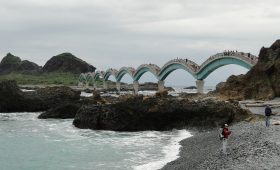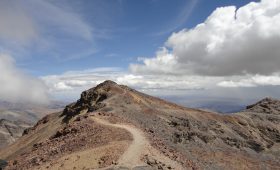Cao Bang Geopark: Discover Vietnam’s Natural and Historical Wonders
About Cao Bang Geopark
Cao Bang Geopark, a UNESCO Global Geopark, is located in northern Vietnam, covering around 3,000 square kilometers. This area is renowned for its dramatic landscapes, including limestone karsts, waterfalls, caves, and lakes. The geopark is not only a haven for nature lovers but also a site of cultural and historical significance, with ancient rock formations and archaeological sites that date back thousands of years.
Getting There
Reaching Cao Bang Geopark from Hanoi is straightforward but requires some planning. There are no rail connections, so buses or limousines are your best bet. A bus from Hanoi to Cao Bang takes about 5 hours and costs around $15 USD. Alternatively, you can rent a car for a more flexible journey. Once in Cao Bang, motorbike taxis (xe ôm) offer a convenient way to explore the area.
Best Time to Visit
The ideal time to visit is during the dry season, from October to April, when the weather is mild and perfect for outdoor activities. However, the wet season (May to September) offers its own charm, with lush greenery and vibrant flora. Be prepared for occasional rain and muddy trails if you choose to visit during this time.
Exploring Cao Bang Geopark
Ban Gioc Waterfall
Ban Gioc Waterfall, the largest in Vietnam, is a breathtaking sight. Located on the Quay Son River, which marks the border between Vietnam and China, the waterfall is especially thunderous during the wet season. You can take a raft to the base of the falls and enjoy the view alongside visitors from the Chinese side.
Tips:
- Bring a waterproof camera for photos.
- Wear sturdy shoes as the area can be slippery.
- Visit early to avoid crowds.
Nguom Ngao Cave
Nearby Ban Gioc, Nguom Ngao Cave offers a stunning display of stalactites and stalagmites. The cave stretches over 2,000 meters and provides a cool escape from the heat. Guides are available to point out interesting formations and bat roosts.
Tips:
- Wear comfortable clothing and shoes suitable for walking in caves.
- Bring a flashlight for darker areas.
- Respect the natural environment by not touching formations.
Pac Bo Cave
Pac Bo Cave is a site of historical importance, where Ho Chi Minh established a revolutionary base in the early 1940s. Located 52 km from Cao Bang city center, the cave is surrounded by lush forests and offers insights into Vietnam’s struggle for independence.
Tips:
- Consider hiring a local guide to learn about the site’s history.
- Follow any guidelines or restrictions to preserve the site’s integrity.
Thang Hen Lake
Thang Hen Lake, surrounded by mountains, is a serene spot best visited during the rainy season when it’s at its fullest. The lake is about an hour from Cao Bang, and hiring a motorbike driver is the most practical way to get there.
Tips:
- Negotiate a round-trip price with a motorbike driver.
- No entrance fee, but bring snacks and water as facilities are limited.
Local Culture and Cuisine
Exploring the local markets is a must. These markets, often bustling in the early morning, offer a glimpse into the lives of the minority tribes in the area. For food, street vendors provide affordable and delicious options like banh mi and pho. In the evening, Kim Dong Walking Street becomes a vibrant food market with various local specialties.




